There are two subjects that I generally try to avoid writing about on this blog. The first is politics, which is a matter I endeavor to leave entirely out of all my work, creative or otherwise. As someone who is trying to break into a field of entertainment, my aim is to do just that; entertain. I have no interest in riling up tensions rather than diffusing them.
The second, perhaps ironically, is other video games. Other than in passing, I prefer not to talk about other studios or their projects, much less critique them. It would, after all, be rather disingenuous of me to throw stones in that particular glass house, seeing as I myself am still finding my footing.
Today, however, I’m making an exception. Not to the politics or throwing of stones, mind. Rather, I’m going to go into a mix of wonder, surprise, and glee over a new release by a studio over in Nice, France.
Let’s talk about Wolcen: Lords of Mayhem, and the generally odd sense of near kinship I felt while exploring their world.
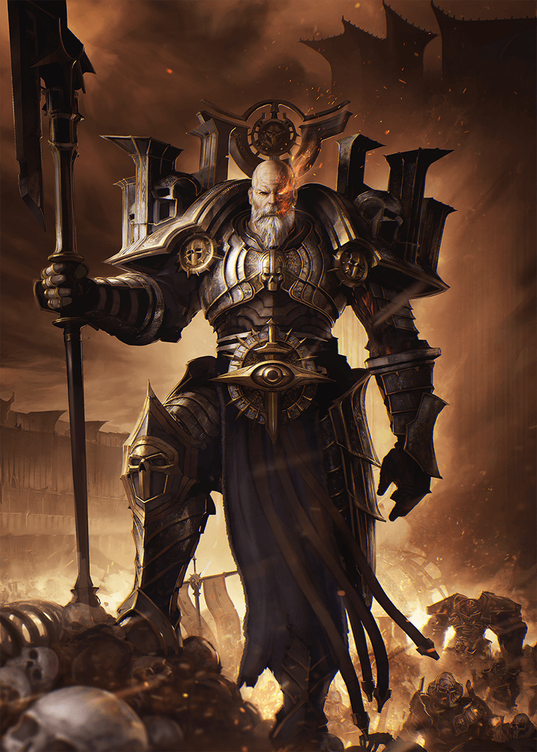
Background Noise
I had heard of both the project and studio over the years, but paid little attention. I knew they existed, mostly on account of the name(s) coming up every time Path of Exile or Diablo 3 did. Yet for whatever reason, I didn’t pay it much heed. That changed on the February 13th release date. After watching some videos, I decided to finally read up on the studio in question. The more I read, the more the story began to seem intimately familiar.
It seems that the team began some four or five years back, with plans to make a sprawling role playing game. They intended to have all kinds of dynamic structures in the world, with full destructibility, modifiable skills, and other bells and whistles. Somewhere along the line, however, things changed, and the entire game design took a sharp left turn towards something else entirely.
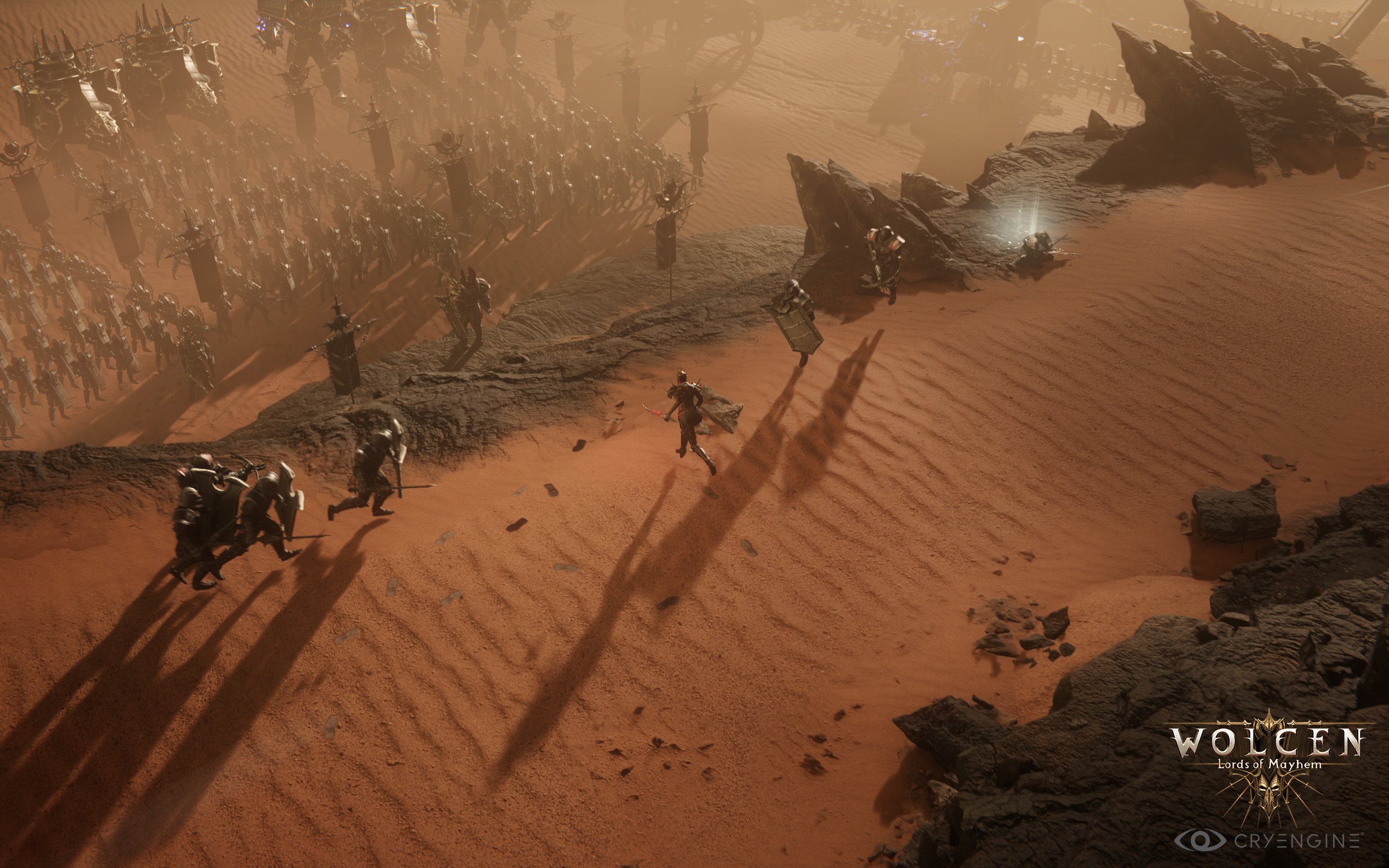 Which is to say, they planned for one thing, perhaps realized it was an ill fit, and began to make something very different. In other words, the same thing that happened to us at Ninja Chip Studios.
Which is to say, they planned for one thing, perhaps realized it was an ill fit, and began to make something very different. In other words, the same thing that happened to us at Ninja Chip Studios.
What they ended up making was an Action Role Playing Game (ARPG), with a focus on moment-to-moment, non-level based action. For a good number of mechanics, the designers at Wolcen seem to have been asking the same questions we have for Project Elysium. Things differ in the kind of answers we’ve come to, and the end goal of the projects, but there was none the less a sense of familiarity with what issues they wanted to address in their game.
Beaten to the Punch?
I should clarify that by no means is Wolcen: Lords of Mayhem the game Mimi and I are building. The folks
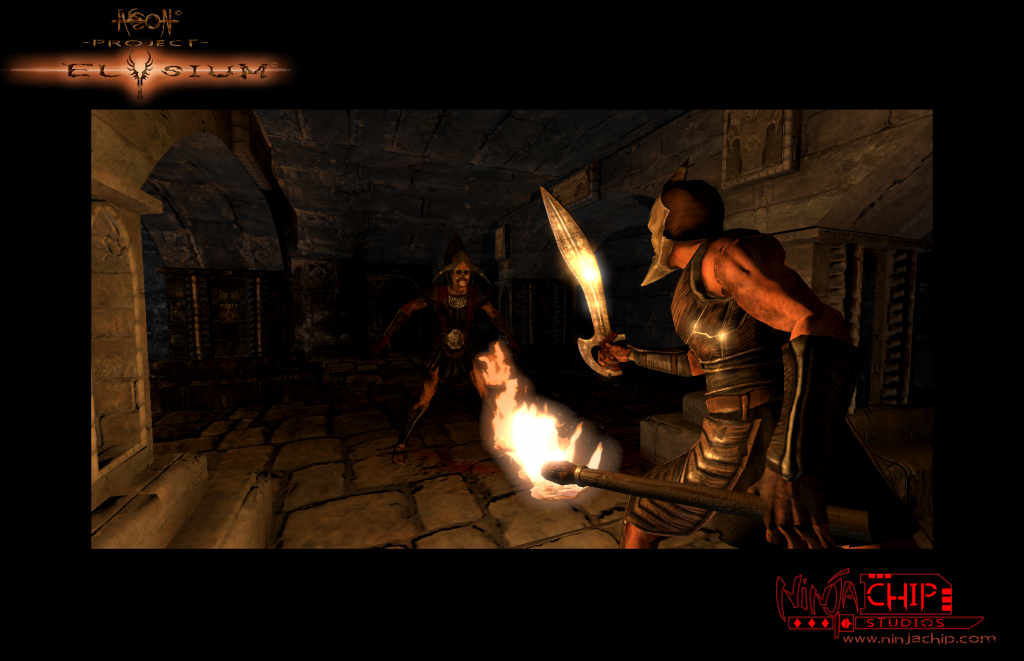
in France have built a game about fast, kinetic rampages against massive hordes in epic spaces. We are building a methodical game set in dark spaces, with an emphasis on carefully planned actions.
Where the two projects overlap is in the fact that both are ARPG’s, played in an isometric perspective. As such, both projects have had to address similar issues in the genre. How do we make the act of fighting more interesting than “stand here and click”? How do we make the game more engaging? Most importantly, how do we let players truly make the kind of character they want, without falling into a “bad build” trap, where what the player wants will get them killed in a split second several hours after the decision was made?
By virtue of Wolcen’s game play being more about the fight and spectacle, they naturally arrived at different conclusions than we did. Well, mostly different. It was certainly curious to see the use of “dodge” as a combat mechanic in more or less the same way we intended for Elysium, though again, its place in the game is slightly different. In our project, the use of mobility is meant to escape and, in some ways, highlight your own vulnerability, where as here, it’s to further the notion of being an action star.
That’s really where the paths diverge then; the focus on being a super hero, versus our “memento mori” approach.
I digress though; we’ll save further discussions on Elysium’s design goals for another time. Today, we’re talking about Wolcen, and what all they did right (and perhaps some things not so right).
Choose your own Adventure!
Even the most malleable of RPG systems- such as the excellent Path of Exile– require you to make a sort of permanent commitment to your play style before you even get to sample the game. Pick a class, and then accept that there is a very specific way in which to play it “properly”. Starting as a mage means you’d best get used to being frail and not optimal with swords, regardless of whether you find magic to be all that fun at all or not.
Wolcen heads this off by making the only really permanent decisions entirely cosmetic ones; your character’s gender and name. At the start, you’ll pick a weapon to begin the game with, but that’s it; from there, what you do with your characters ‘build’ is up to you, and can be reset at any point in the game, based on what you think is optimal and, more importantly, fun.
Although the aforementioned Path of Exile offers a high degree of freedom in character building, I feel Wolcen takes this further, and in many ways closer to how we intended to go about a ‘classless system’.
More than a statistic
We’re still early on in the game, but at the onset, the thing that stands out the most is how much more involving the game is. So far, this isn’t turning out like the usual ARPG, where you pick a few favorite skills, and then endlessly spam them. You have to move, time your approach with what your enemy is doing, and most importantly, manage two resources; Will, and Rage. 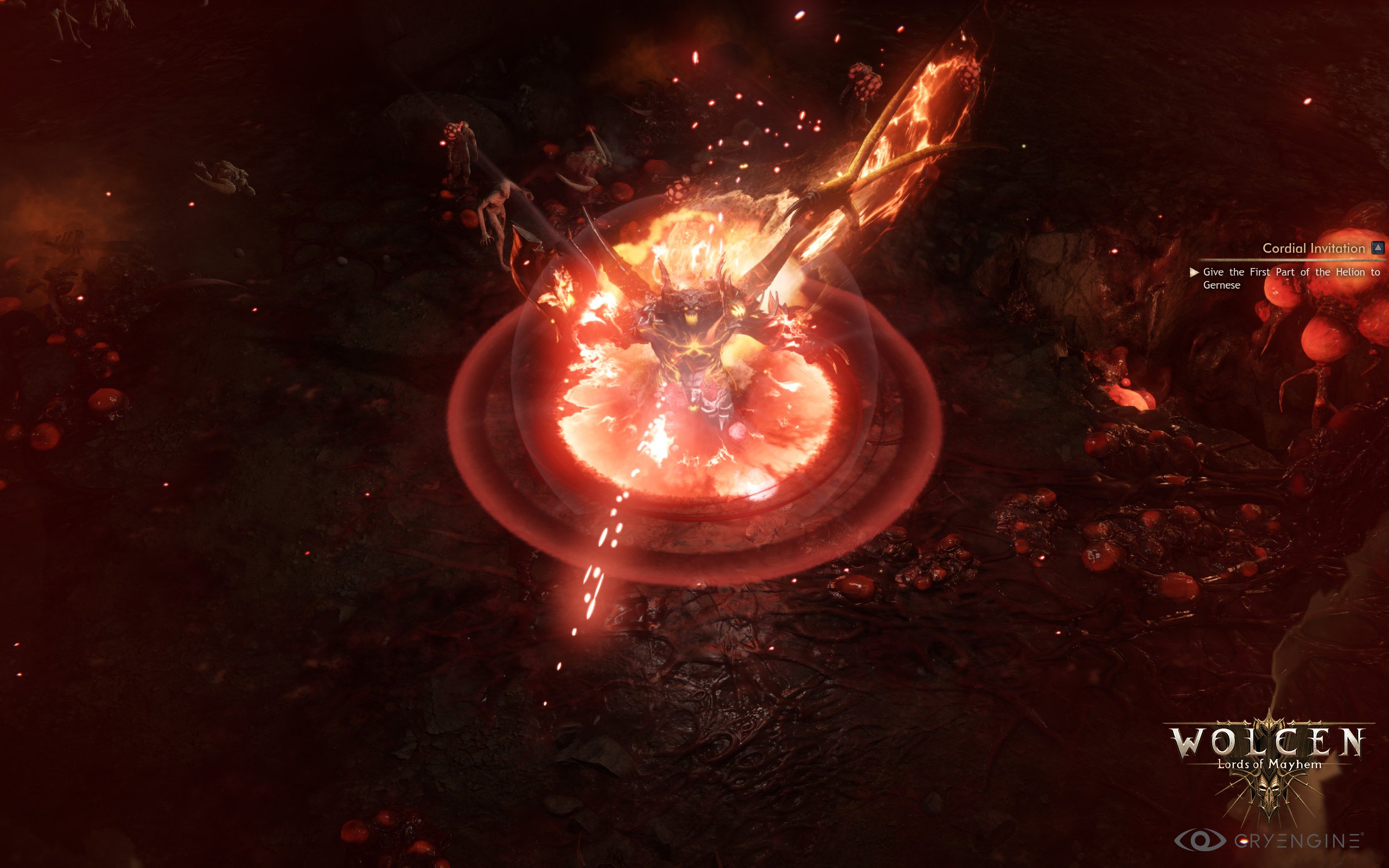
The whole resource system is a familiar trope in most games.The difference here is that the two are not distinct bars. There is no one “mana” meter, but instead twin balances that each feed into each other. Spend Will for things like magic, and your Rage bar fills, which is then used to perform martial feats.
The balancing act is part of what makes combat have such a clear ebb and flow. You can start out a fight with a volley of magic, then dive in for a few close encounters, before weaving back out for another blast. Combined with the stellar animations, it makes each fight feel more like the scenes you’d see in a show like Castlevania or Berserk: The Golden Age.
The system does have a downside though. As long as you’re playing a “spell sword” kind of character, it makes perfect sense. If, on the other hand, you’re playing a typical mage or knight, one of the two resources can be outright useless. The end result is the game then falling back to the more standard flow of “spend mana, then chug a potion”, rather than the constant motions a hybrid character would allow.
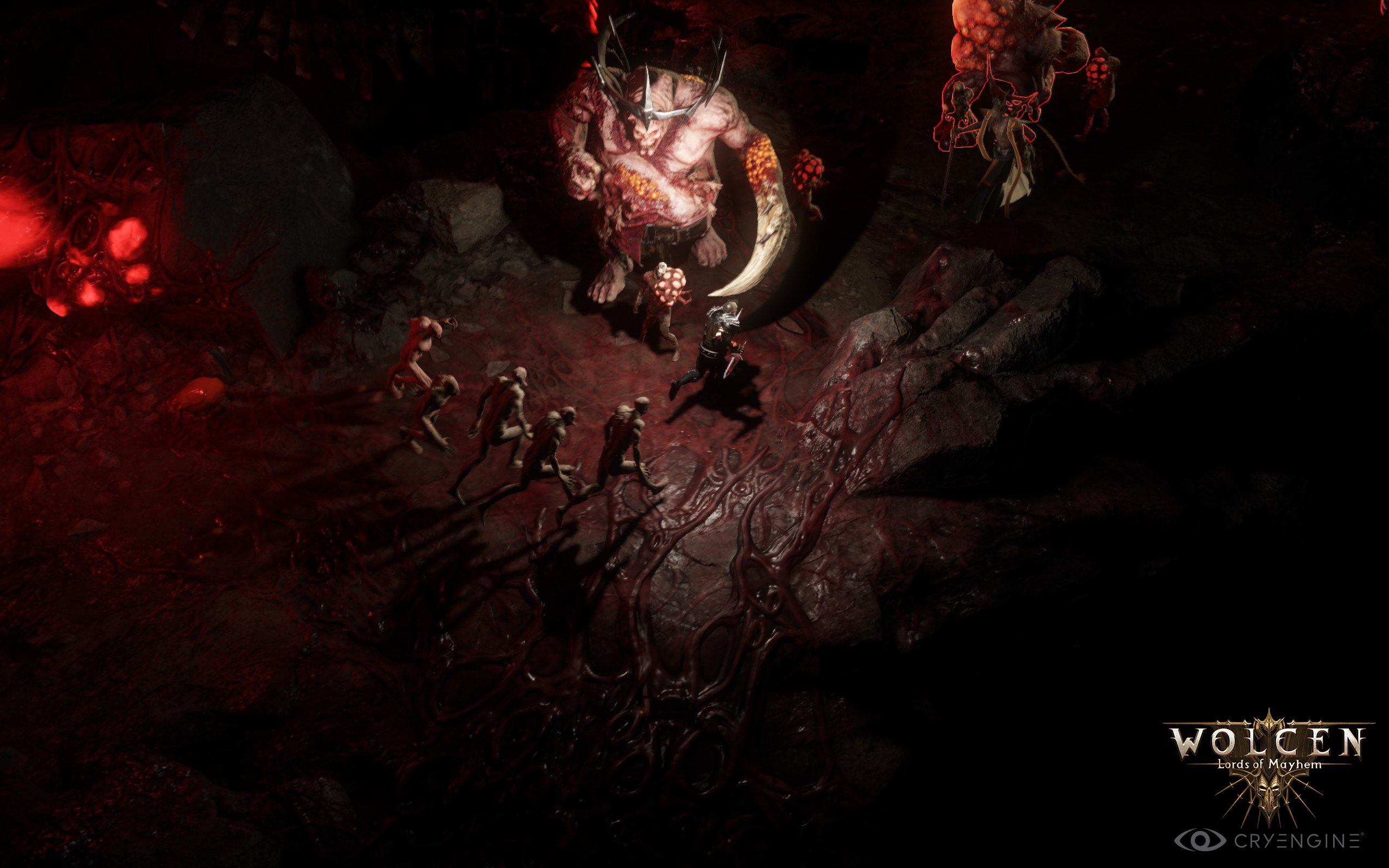 That isn’t to say that pure builds are boring. Far from it; because of the animations and requirement to time your movements, even ‘standard’ arch types are fun. Melee weapons have a weight to their impacts, and each type dramatically changes how you fight. Two handed swords clear out huge swaths of foes at once, while shields can be used to stun foes as you charge at them. Wielding two weapons, on the other hand, makes you strike at a blazing pace, while possibly making foes bleed out long after the strike. Staffs, on the other hand, confer a ricocheting projectile that fuels your will as it hits targets.
That isn’t to say that pure builds are boring. Far from it; because of the animations and requirement to time your movements, even ‘standard’ arch types are fun. Melee weapons have a weight to their impacts, and each type dramatically changes how you fight. Two handed swords clear out huge swaths of foes at once, while shields can be used to stun foes as you charge at them. Wielding two weapons, on the other hand, makes you strike at a blazing pace, while possibly making foes bleed out long after the strike. Staffs, on the other hand, confer a ricocheting projectile that fuels your will as it hits targets.
The choice of arms also dictates what abilities you have access to. Magic spells, for example, can only be cast by using a staff, or holding a ‘catalyst’ in one hand. The latter are small charms that allow you to use a melee weapon or pistol in your main hand, while still allowing you to perform magic. The downside being that your will regeneration will be slower than a pure mage’s. Likewise, pistols and bows allow you to use impressive rail gun and auto-turret abilities, while melee weapons grant access to vicious chain whips and leaps.
Figuring out the various combinations of weapons- and thus mixing and matching abilities- is part of the fun, and in some ways stands in for the lack of preset classes. In the end, your play style will be dictated more by what you equip, rather than what you pin down on your level up screen (although that is certainly important too).
The Beatings
Mimi and I are still unpacking what all Wolcen has to offer, and still coming across all kinds of things that seem familiar to us. Unfortunately, we’re also discovering a lot of the same hurdles that we ourselves ran into during our own development projects.
A glance at the reviews online reveals the fact that the game did not release in the most stable of conditions. It is buggy, and has a lot of stability issues. I personally don’t feel that the technical troubles take away from what is otherwise quite a thrilling ride. Yet at the same time, it’s entirely possible that my tolerance for its issues comes from the empathy I feel for the developers. We’ve most certainly been in the same position of trying to make something great, only to encounter a mountain of troubles seemingly coming out of nowhere. We’re also quite familiar with how communities gathering around a game can turn passion into poison. Our experience with such has mostly been around managing multiplayer servers for Neverwinter Nights 2, which while similar, is surely only a small taste of the hell the guys in Nice are working with.
Regardless of whether I’m just biased or not, the actual game that is Wolcen: Lords of Mayhem is fun, and I highly encourage anyone looking for a good ARPG romp to check it out.

Be First to Comment